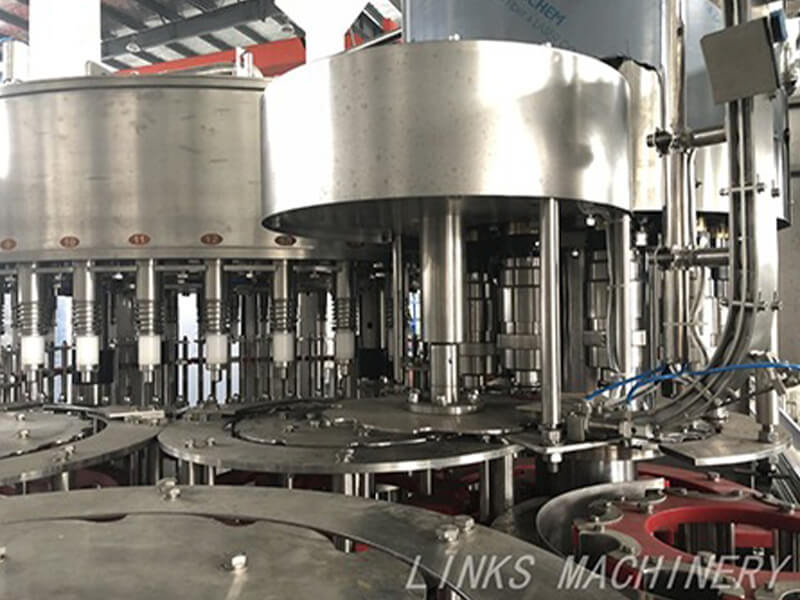©2019-2020 Zhangjiagang Links Machinery Co.,Ltd. All rights reserved.Site Map Privacy Policy
- Mail Us: info@links-machine.com
- Call now: +86 158 5164 6970
The cap feeding machine is a can sealing device used in the beverage and food industry. It adopts fully automatic (or semi-automatic) control. Rotate and seal the cover for the products that need to be packaged. The cap feeding machine is widely used in packaging, and can perform evacuation, sealing and capping operations on various products in bottles and cans.

Detailed explanation of the operation process of the cap feeding machine of the vacuum capping machine:
the bottles without caps after completing the filling process enter from the left side of the machine's in and out can conveying, and there are pneumatic can blocking devices on the baffles on both sides of the conveyor. The function is that only one bottle enters the push position at a time, and other bottles will not enter by mistake during the vacuum capping process.
The tank feeder consists of an actuator cylinder, a sensor and a push ring. When the bottle enters the push position, it will be detected by the sensor. When the previous can work is completed and the can ejector has been reset, the push ring of the can feeder will push the bottle to the center of the tray. Therefore, the bottle body detection signal is a trigger command signal for the start of a bottle working cycle.
The push ring is customized according to the size of the positioning height of the bottle and is a bottle-shaped piece. The bottle body positioning ring on the corresponding tray is also a bottle-shaped part. When the bottle feeder feeds the bottle, the capping device will push a capped bottle to the position of the capping disc under the machine head. After entering the center of the tray, the push ring will quickly return to the initial position, and the position sensor on the execution cylinder can detect the push ring. After resetting the model, the vacuum chamber rises.
The upper end face of the cylindrical glass vacuum chamber is against the silicone sealing gasket at the position of the machine head. During the rising of the vacuum chamber, the sensor on the driving cylinder of the vacuum chamber can detect that the vacuum chamber is close to the sealing gasket, and the vacuum switching valve on the machine head will open in time. The lids are sucked under the capping pan, and the bottles are in the center of the tray, both inside a closed vacuum chamber. After the vacuum valve is switched, the vacuum chamber and the vacuum pump pipeline are connected, and the vacuum pressure sensor is connected with the vacuum chamber, which will feedback the vacuum degree pressure value in the vacuum chamber to the machine program controller in real time.
When the value detected by the vacuum sensor reaches the set value, the tray lifts the bottle up, and the capping head starts to rotate at the same time. When the bottle mouth is in contact with the bottle cap, the bottom plate of the tray begins to receive downward pressure, and the claw mechanism on the tray will clamp the bottle body, and at the same time, the top surface of the cap and the surface of the silicone screw cap are also subjected to equal pressure, and the cap is screwed. The disc transmits the capping torque to the cap through friction, so that the hook claws of the cap are screwed in along the thread of the bottle mouth. When the capping resistance increases, the capping disc will stop rotating.
The capping action is controlled by a delay method. After the capping action is completed, the vacuum switching valve is reset, the vacuum chamber and the atmosphere are connected, and the normal pressure state is restored. The vacuum chamber and the tray descend at the same time. After detecting the reset of the vacuum cover and the tray, the bottle ejector moves to push the bottle from the position of the tray to the right side of the conveyor, and the conveyor chain plate will send the bottle that has been vacuumed and sealed out of the machine. Finally, the sensor on the can ejector detects that the can ejector is reset, and a working cycle of bottle vacuuming and capping is completed.